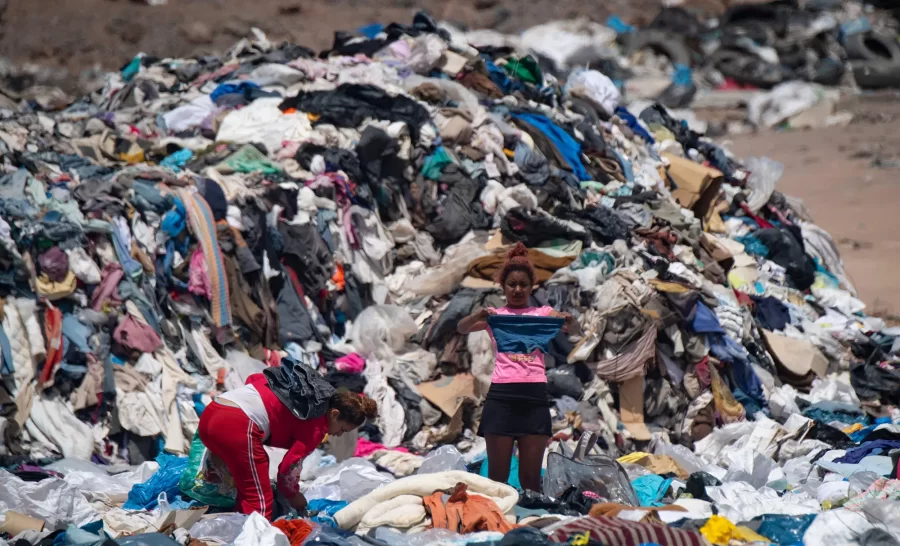Why is Sustainable Fashion So Misunderstood?
Fashion sustainability is not well known and needs to change now. Everyday fashion is creating a disgustingly huge impact on the environment without most people even knowing. Education on this topic is becoming increasingly vital to save the Earth, but sadly there is little knowledge on sustainability.
The definition of sustainability is something that is able to be maintained. In other words, to avoid the depletion of natural resources to maintain an ecological balance. According to the Common Objectives stats, the fashion industry is one of the largest contributors to environmental waste, and people haven’t done much about it. Fashion sustainability has been a worldwide trend, but the idea of this trend is completely misinterpreted. Brands instead use the idea of sustainability to attract buyers. These false advertisements lead to unsustainable habits, such as overconsumption of goods.
Fossil fuels may not come to mind when you think fashion, but they should. The fashion industry is a superuser of fossil fuels, relying heavily on products from many of the same oil and gas companies emitting greenhouse gas emissions. According to the UN Environment Programme, the fashion industry is the second biggest consumer of water and responsible for about 10% of global carbon emissions.
Not only does this dirty industry harm the environment with air pollution and water consumption, but there’s also a horrific amount of clothes being thrown away every second. The equivalent of a truckload of clothes is burnt and buried in a landfill every second, according to the Ellen Macarthur Foundation. This industry is one of the top contributors to plastic microfibers being dumped in the ocean.
Overproduction is the biggest failure in fashion. With fast fashion trends, producers started making clothes at extremely fast speeds to get the newest style on the market as fast as possible. Shoppers buy the newest fast fashion trends, but by the time they own those clothes, a new trend has already started. This means those old trends are unsold and thrown away. This process repeats itself with every new popular item. The unsold garments are often burned or thrown away in dumps. According to the Fashion Network, H&M has burned up to 12 tons of clothes every year since 2013.
Greenwashing is another huge problem that is encouraging consumer addiction. Companies are advertising their clothing as sustainable to increase quantity demand amongst consumers. Companies, such as Zara, would rather lie than change their practices. Zara’s Join Life campaign is supposedly their more environmentally conscious clothing line. This might sound appealing until you look into it a little further. They commonly use words such as green, eco-friendly, and sustainable. Although these words appear promising, there’s no legal proof that these statements are true. Zara makes these claims that may sound good to the consumers, but aren’t specific or beneficial to any particular item. An example of this lie is woven into Zara’s faux leather jacket/pants. It claims to, “minimize the environmental impact of textile manufacturing.” Sadly, when you look further into these faux clothing items, you’ll see that they’re made of 100% polyester with a 100% polyurethane coating, meaning it’s made from oil. People think that if something says it’s sustainable, it must mean that it’s better when there’s no proof to back up that statement and no understanding of what is sustainable.
Many people don’t understand the effects their clothing has made on the environment and what sustainability in fashion means.
Neveah Scholze, a Junior here at North High School said that sustainable fashion, “can be anything you want it to be. I feel like you can make anything sustainable fashion besides things that are going to pollute the air or put people against each other. Like genuine love, then you can make it sustainable.”
When she was asked what she thought unsustainable fashion is, her answer was “negative energy and overuse of things.”
Negative energy and love aren’t quite what sustainability is, although that would be a great reality to live in. Not a lot of people understand sustainability in clothing, and often they continue to harm the environment without even knowing.
Jasper Ang, another Junior from North, believes that sustainable fashion is just “biodegradable stuff.” While that might be a good example of something sustainable, it isn’t close to what the idea of sustainability is.
The planet is being destroyed at a disturbing rate and it’s time to start educating people on what they can do to save it because, from the looks of it, there’s not a lot of knowledge on this huge problem. Companies, like Zara, continue to take advantage of people with these false claims. If nothing happens soon, the fashion industry will continue to rot Earth with its bad habits and corruption.












